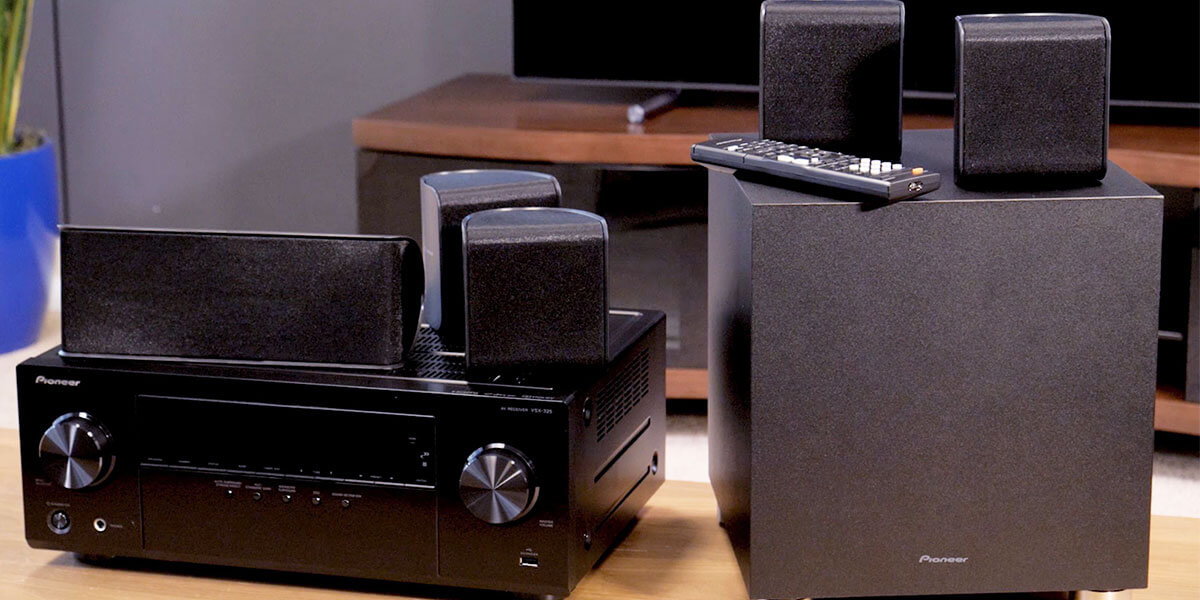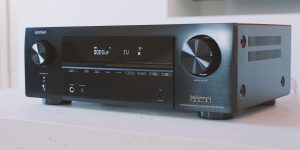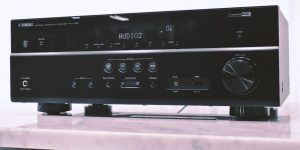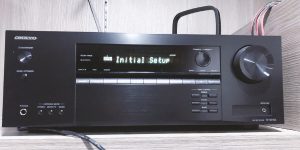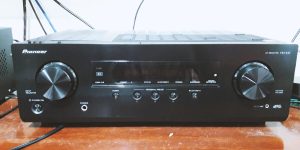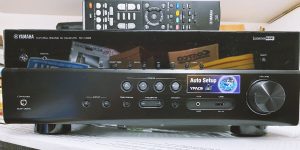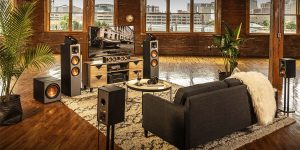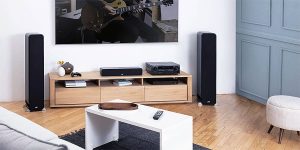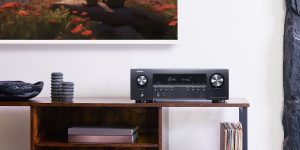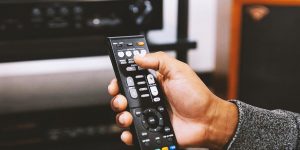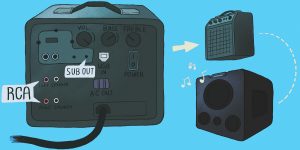Like dance partners in perfect synchrony, the relationship between speakers and receivers is more than mere compatibility — it’s the key to unlocking high sound quality. Imagine your favorite tunes resonate with clarity, dialogue in movies feels like whispered secrets. This audio utopia is not just the stuff of dreams; it’s the result of a thoughtful pairing of these two components. If you’re struggling with how to match speakers to amplifiers, I will uncover the nuances and explain why it is not just a technical consideration but a quest for audio excellence.
Understanding speaker specifications
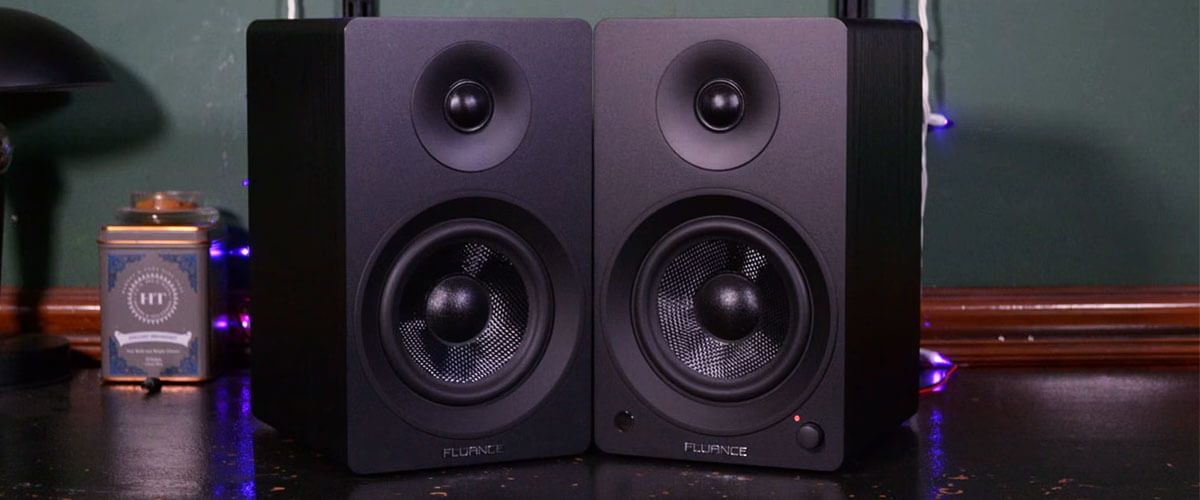
Impedance
Speaker impedance is a critical aspect of audio systems, acting as the gateway to a harmonious and efficient connection between amplifiers and speakers. The common values are 4, 6, and 8 Ohms.
Speakers with a 4-ohm impedance are relatively low in resistance. They allow more electrical current to flow, which can result in higher power consumption.
6-ohm speakers offer a middle-ground impedance, striking a balance between power efficiency and compatibility. They provide a moderate level of resistance. Speakers with an
8-ohm impedance are common and widely used. They present a higher resistance compared to lower-ohm speakers, which means they draw less electrical current.
Sensitivity
It measures how effectively a speaker converts electrical power into sound and quantifies the loudness of the sound produced by a speaker for a given amount of amplifier power.
A higher sensitivity rating indicates that the speaker produces more sound for a given amount of amplifier power. Speakers with higher sensitivity require less power to achieve a certain volume level, while speakers with lower sensitivity demand more amplifier power to reach the same volume level.
High-sensitivity speakers are more power-efficient, making them an excellent choice for setups where amplifier power is a consideration. They can deliver robust sound even with less powerful receivers. Low-sensitivity speakers may be optimal for systems with high-powered units, ensuring they can fully utilize the available power for greater performance.
Power handling
This indicator serves as a protective barrier, preventing speakers from being overwhelmed by excessive electrical power. Speakers are designed to handle a specific amount of power, and exceeding this limit can lead to damage, such as blown drivers or voice coils.
Matching the power handling capabilities of speakers with the output of the amplifier ensures a balanced and harmonious audio experience. This harmony allows speakers to reproduce sound accurately across the entire frequency spectrum without distortion or degradation.
When speakers receive the right amount of power, they can accurately reproduce the dynamics of music, preserving nuances.
Understanding receiver specifications
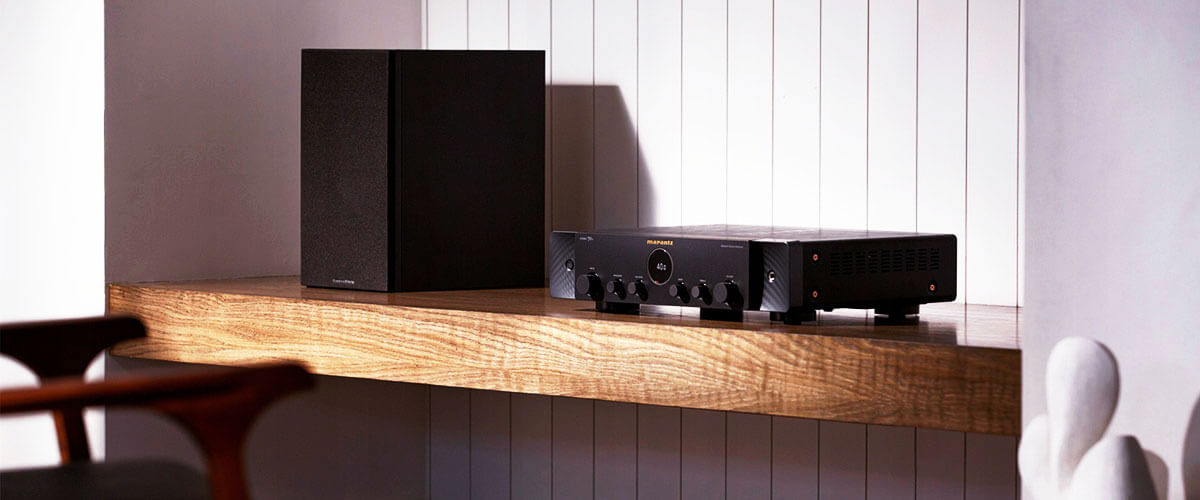
Output power
Receiver output power measures the amount of electrical energy converted into acoustic energy, or simply how loud the speakers can play, expressed in watts (W). Generally, a higher output power rating indicates the potential for greater volume capabilities. A receiver with more wattage can drive speakers to produce louder sound levels, which is particularly important in larger rooms or for demanding audio setups. Output power is often specified per channel. For example, a receiver may be rated at 100 watts per channel. This means each speaker connected to an individual channel can receive up to 100 watts of power.
Impedance
The input impedance of a receiver is an important specification that defines the electrical resistance presented by the input circuitry. It is also typically measured in Ohms. A higher input impedance indicates greater resistance, and a lower one indicates lesser resistance. The input impedance interacts with the output impedance of the source device (like a DVD player or CD player). Matching or appropriately configuring these impedances ensures efficient signal transfer without signal loss or distortion.
How to match speakers with a receiver
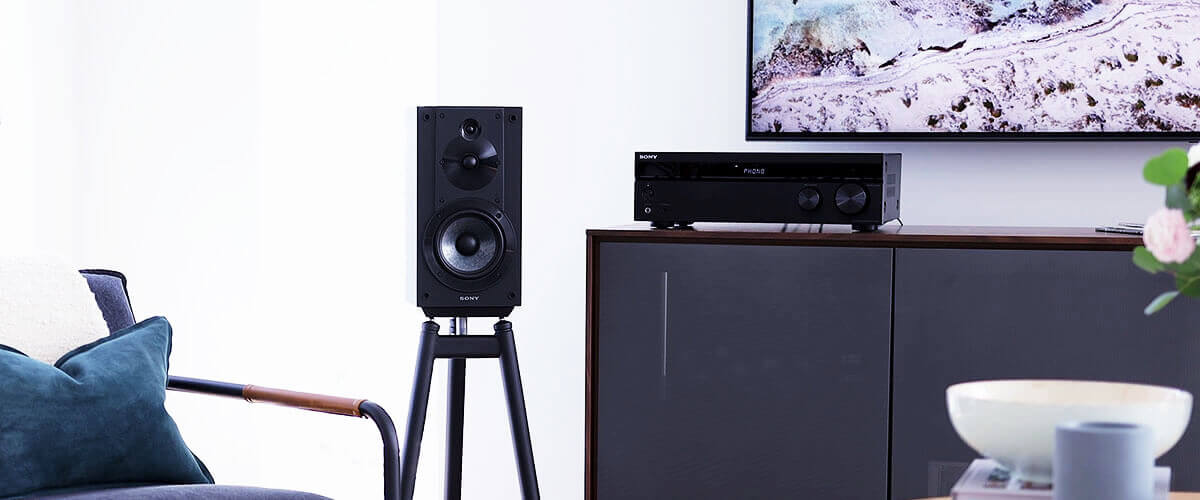
Matching impedance of speakers and receiver
First of all, if you’re not sure about the impedance, look for the specifications of your receiver, paying attention to the recommended speaker impedance range. As I already have mentioned, there are impedances of 4, 6, or 8 Ohms.
While 4-ohm speakers can deliver a powerful and dynamic sound, they require amplifiers capable of handling lower impedance. Matching the right amplifier is important in this case to prevent overheating and ensure optimal performance.
6-ohm speakers are often versatile, working well with a variety of AVRs. However, it’s essential to check that your amplifier is rated for 6-ohm loads to ensure a seamless and efficient audio setup.
8-ohm speakers are highly compatible with a broad range of receivers. This impedance is a standard in many home audio setups, providing a stable and efficient connection without excessive power demands.
Matching power ratings of speakers and receiver
Ensure that the power handling capacity of the speakers is equal to or greater than the receiver’s power output. For example, this is generally acceptable if your speakers are rated at 100W RMS and your receiver outputs 80W per channel. I’d recommend choosing the speakers that handle more power than the receiver outputs. It’s generally safe for speakers and will prevent distortion and damage to them. Pay attention to both RMS (continuous) and peak power ratings. The RMS rating is a more accurate indicator of continuous power handling, while the peak power rating provides insight into the speaker’s ability to handle short bursts of higher power.
The consequences of a mismatch
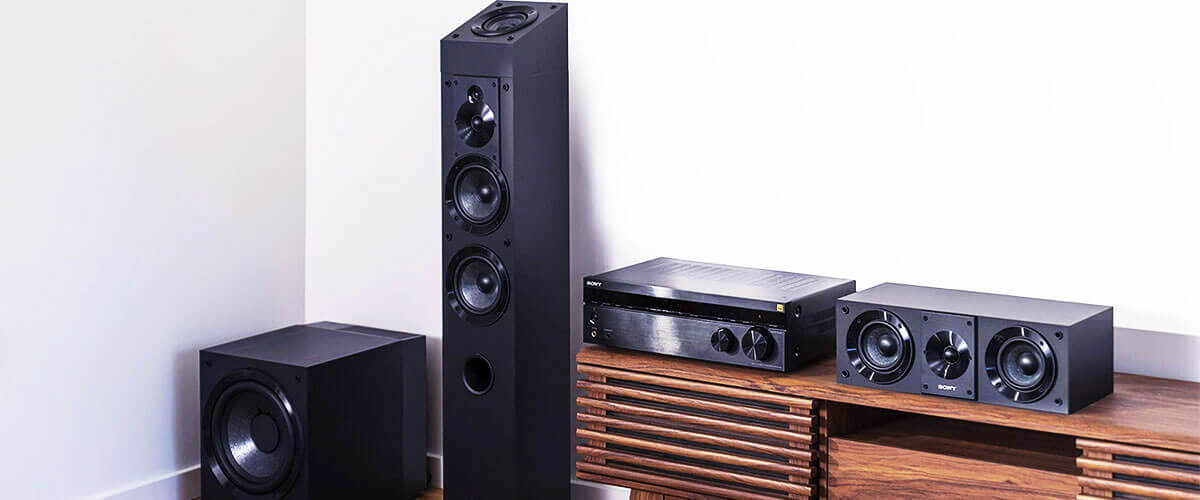
Plenty of things may happen due to mismatching the power ratings of the receiver for speakers, impacting the overall performance and potentially causing damage to the audio equipment. So, I will briefly describe the major of them.
Underpowering speakers can result in distortion and clipping. When the receiver is unable to provide sufficient power to meet the demands of the speakers, the audio signal becomes distorted, affecting the quality of the sound.
If speakers demand more power than the receiver can provide, the amplifier may work harder to try to meet those demands. This can lead to overheating of the equipment components and, over time, result in damage to the amplifier.
Mismatched power ratings can compromise the overall audio quality. The speakers may not perform optimally, and the system may fail to deliver the intended sound experience, especially at higher volumes. There also may be a limit to the dynamic range of the audio system. Inadequate power can limit the system’s ability to reproduce both subtle and loud audio passages. You also can note a loss of detail and precision in audio reproduction. This can affect the clarity of vocals, instrument separation, and the overall immersive experience.
Prolonged use of mismatched components may lead to equipment failure over time. This is particularly true if the system is consistently pushed beyond its intended limits. To avoid these consequences, it’s essential to carefully match the power ratings, referring to the user manuals and technical specifications provided by the manufacturers. If in doubt, seek advice from audio professionals.
Other considerations
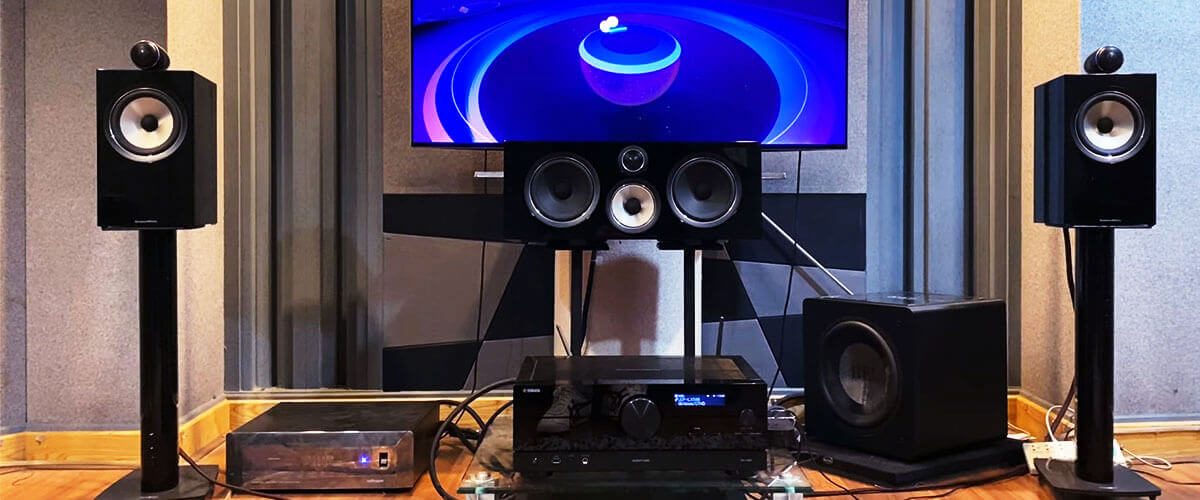
Take into account the size of your room and your typical listening levels. Larger rooms may require speakers with higher power handling to fill the space adequately. Assess the dispersion characteristics of the speakers for even coverage. Consider the physical size of the speakers in relation to the room. Large floor-standing speakers may be suitable for spacious living rooms, while bookshelf speakers or compact satellite speakers may be more appropriate for smaller rooms. The height of the ceiling can affect the dispersion of sound. Taller ceilings may benefit from speakers that project sound effectively in both vertical and horizontal directions. If you like to listen at high volumes, having speakers with a comfortable power margin is advisable.
Don’t forget about the room acoustics as well. Evaluate the presence of reflective surfaces, absorptive materials, and any acoustic treatments. Rooms with a lot of hard surfaces may benefit from speakers that can handle potential reflections, while rooms with absorbent materials may require speakers that provide more direct sound.
While not mandatory, some users prefer to match speakers and amps from the same brand or series for consistency in sound and aesthetics.
FAQ
Should speaker wattage be higher than AMP?
While it’s safe for speakers to handle more power than the amplifier provides, extreme overpowering can lead to speaker damage. It’s essential to avoid significantly exceeding the speakers’ power handling capacity.
Can receivers or amplifiers damage speakers?
Yes, using an amplifier that provides less power than the speakers may result in damage to the speakers over time. A more powerful amplifier can cause physical damage to the speaker cones, voice coils, or other components. In addition, when the amplifier is pushed beyond its capabilities, a distorted signal appears. Continuous exposure to distorted signals can damage the speakers.
Do I need to consider the frequency response of the speakers when matching them with a receiver?
By taking the frequency response into account, you can optimize the performance of your audio system and ensure that the speakers work harmoniously with the receiver. Full-range speakers can reproduce a broad spectrum of frequencies, including bass. If your receiver handles full-range speakers, consider matching them for a comprehensive audio experience.

